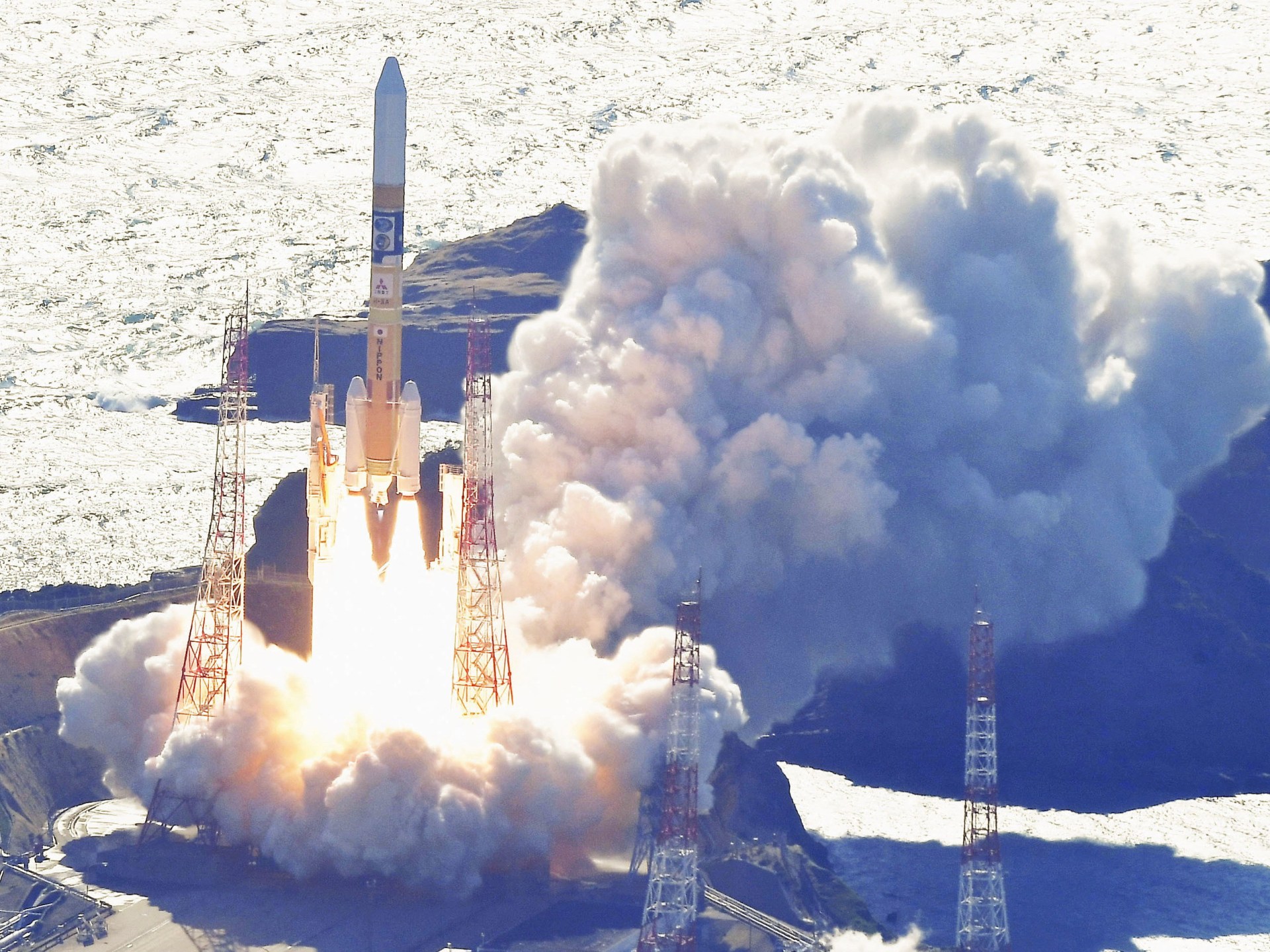Japan has launched its “Moon Sniper” mission, officially known as the Smart Lander for Investigating Moon (SLIM), determined to turn into the fifth country on the planet to accomplish a precision landing on the lunar surface.
This mission has earned huge consideration because of its unique objective of landing within an unprecedented 100 meters of a specific target on the moon, a remarkable feat compared to the usual range of several kilometers.

Also Read: China Bans iPhones for Government Officials
On September 7, 2023, the “Moon Sniper” mission set out on its journey to the moon, taking off from the Tanegashima Space Center in southern Japan.
The launch, which was watched by huge number of spectators online, marks a pivotal moment in Japan’s space exploration efforts. SLIM, the small-scale exploration lander, is expected to touch down on the lunar surface in early 2024.
What sets the “Moon Sniper” mission apart from previous lunar landings is its commitment to precision. SLIM is designed to land within an astonishing 100 meters of a predetermined target location, a level of accuracy never before attempted for celestial body landings with significant gravity, such as the moon.
While different countries have effectively arrived on the moon, Japan’s mission aims to redefine the possibilities of where we can land and explore in our solar system.
The Japanese space agency, JAXA, has communicated its expectation to push the limits of lunar investigation by accomplishing pinpoint landing.
This capability not just opens up new horizons for lunar missions yet additionally expands the chance of arriving on planets with even scarcer resources than the moon. By mastering precision landing, humanity takes a significant step towards unlocking the mysteries of our solar system.
Also Read: iPhone 15: Apple Announces September 12 Launch Event
At this point, just four countries US, Russia, China, and India have effectively landed tests on the moon. India’s Chandrayaan-3 mission, which effectively arrived close to the moon’s south pole a month prior to Japan’s “Moon Sniper” mission, marked a historic achievement for India’s low-cost space program. However, lunar missions have not been without challenges and setbacks.
Japan’s journey to the moon has been marked by the two successes and disappointments. In 2022, Japan sent a lunar test named Omotenashi as a part of the US Artemis 1 mission, however it was lost.
Prior in 2023, a Japanese start-up called ispace attempted to become the first private company to land on the moon but lost communication with its craft during a “hard landing.” These experiences highlight the complexities and risks associated with lunar missions.
Japan’s “Moon Sniper” mission isn’t just about lunar investigation; it likewise incorporates the XRISM space research satellite, a joint project developed in collaboration with the US and European space agencies.
XRISM’s mission is to perform high-resolution X-ray spectroscopic observations of the hot gas plasma wind that flows through galaxies in the universe. This research will provide invaluable insights into the origins and composition of celestial objects, furthering our understanding of the universe’s evolution.
Also Read: Huawei Mate 60 Pro Launched: Price and Full Specs
X-ray observations are essential for studying some of the most energetic and enigmatic phenomena in the universe. X-rays emanate from events such as stellar explosions and the high-speed particle jets launched by supermassive black holes at the centers of galaxies.
XRISM‘s advanced instruments, Resolve and Xtend, are poised to revolutionize our understanding of these cosmic phenomena. Resolve, operating at incredibly low temperatures, will unlock the chemical details of hot gas inside galactic clusters.
Xtend, with its broad field of view, will provide unprecedented spectra for studying the internal structures of neutron stars and particle jets powered by black holes.
While XRISM contributes to our knowledge of the broader universe, SLIM’s precision landing holds the key to exploring specific lunar locations in unprecedented detail.
SLIM’s vision-based navigation technology will enable it to target a site near the small lunar impact crater called Shioli, situated in the vicinity of the Sea of Nectar.
This landing site is strategically chosen for its potential to yield insights into the moon’s composition, shedding light on its origins and geological history.
Also Read: Russia’s Luna-25 Spacecraft Crashes into Moon

/cloudfront-us-east-2.images.arcpublishing.com/reuters/MKOONFSTGVJZLKB3DWXULNKNSU.jpg)




















